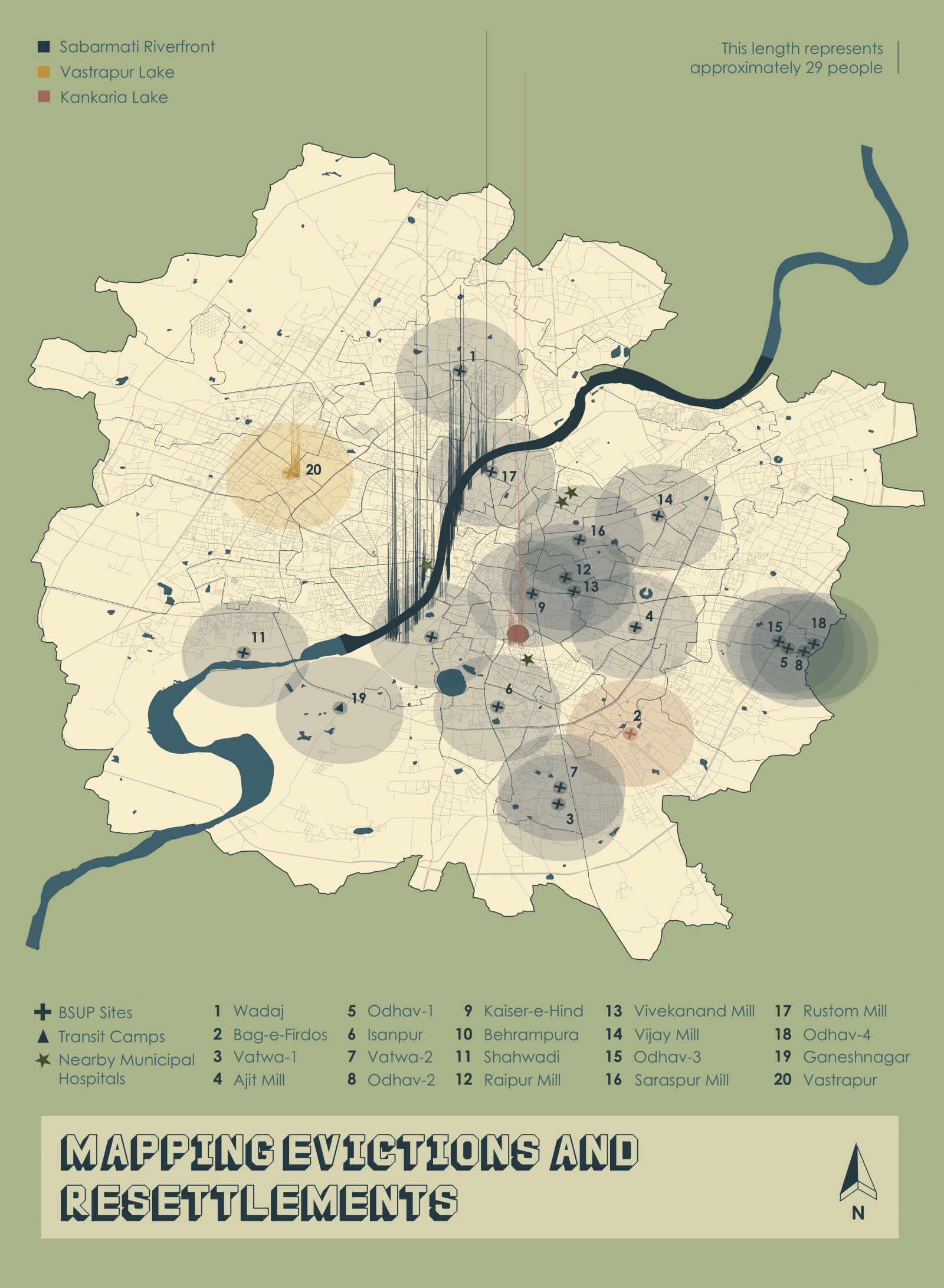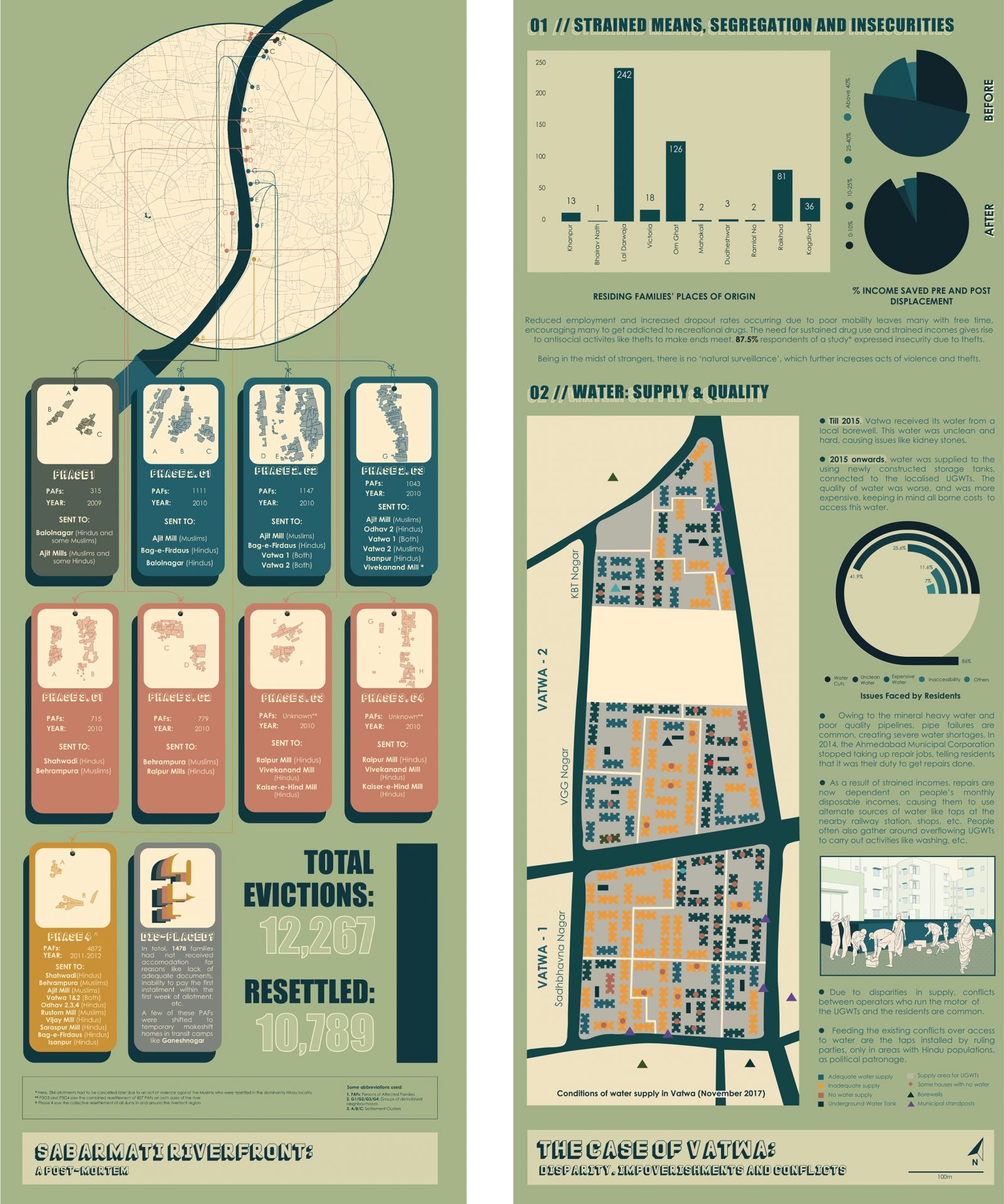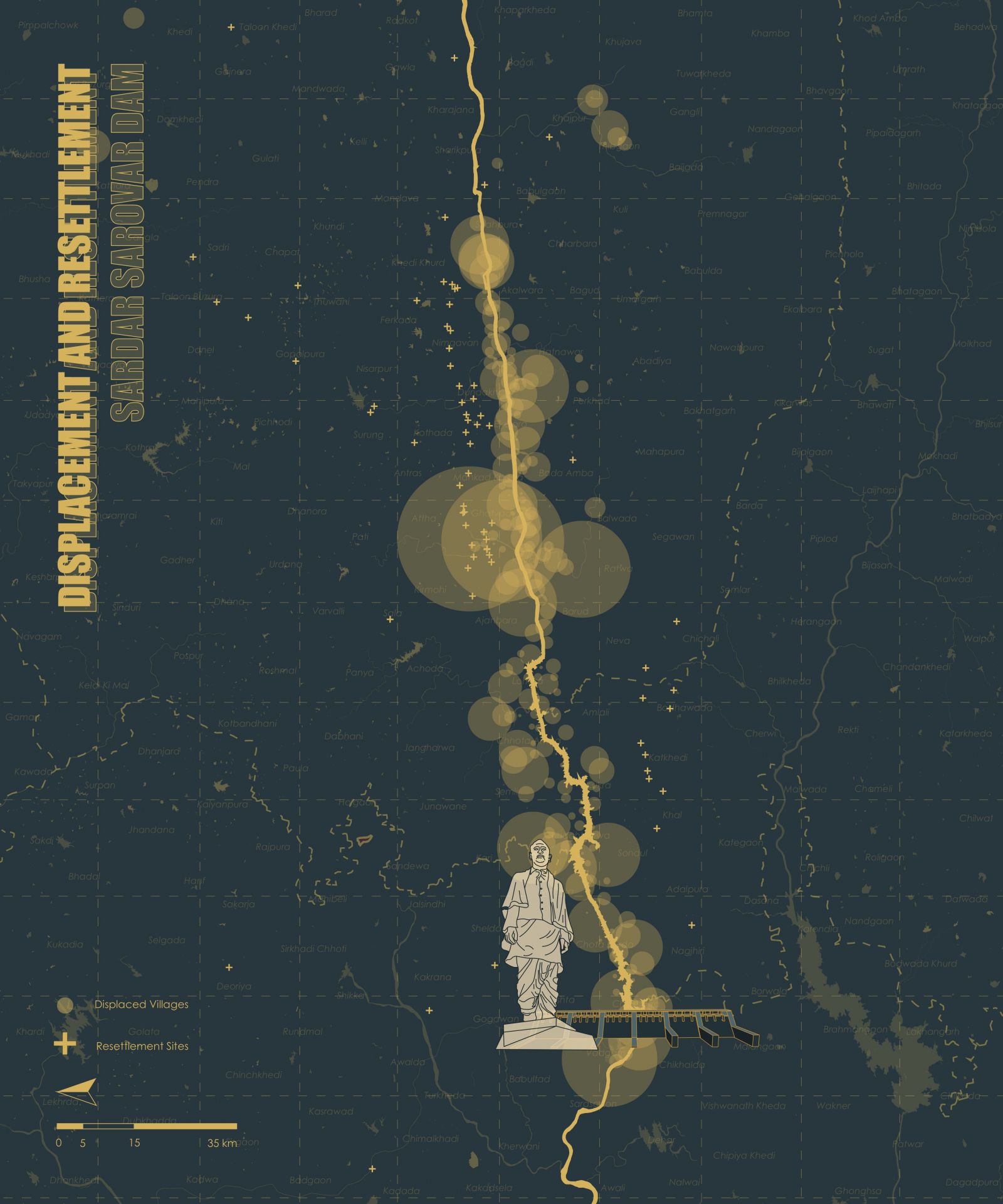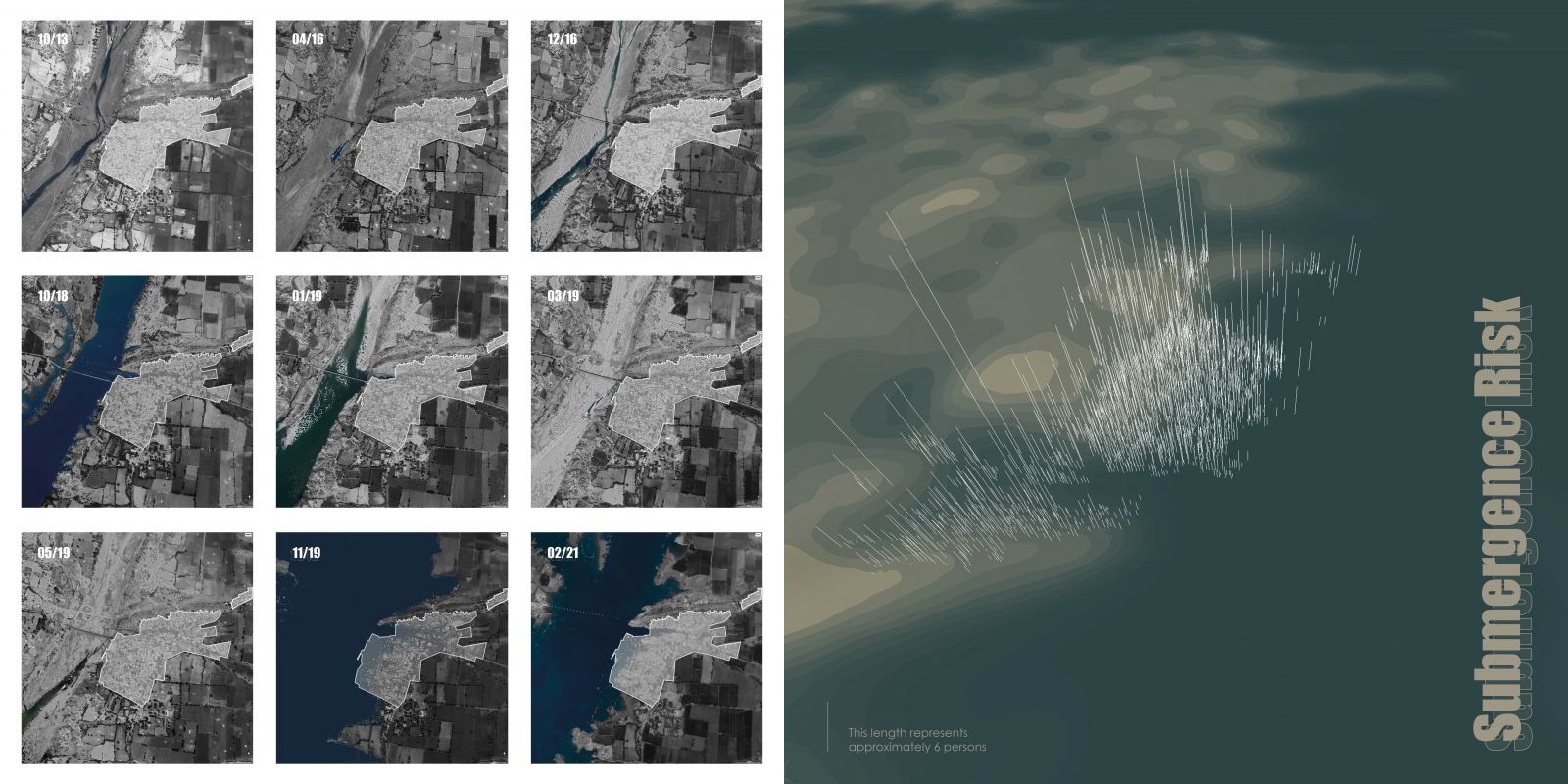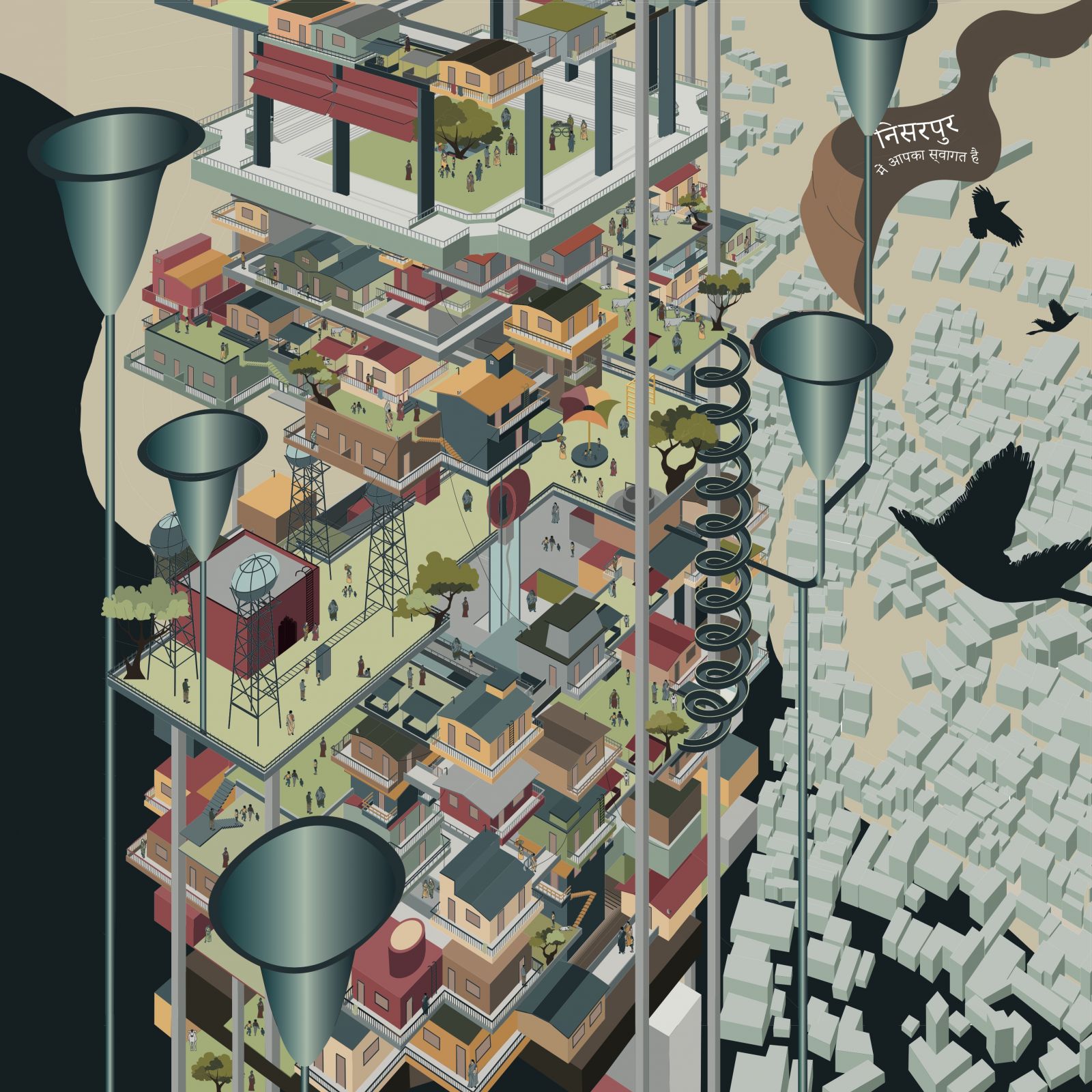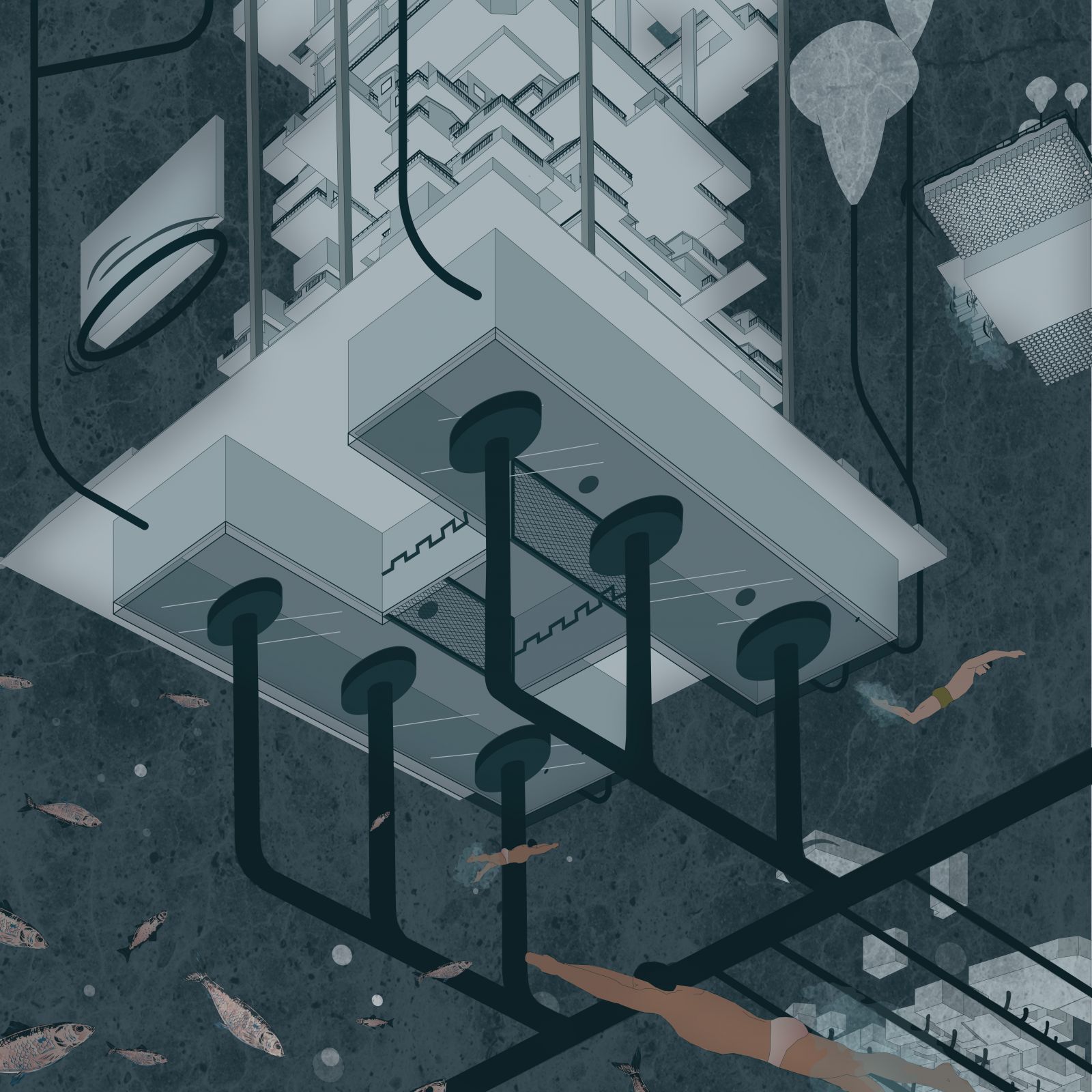Your browser is out-of-date!
For a richer surfing experience on our website, please update your browser. Update my browser now!
For a richer surfing experience on our website, please update your browser. Update my browser now!
Bouyant (Be)Longing is a speculative project that seeks to develop a sustainable and an all-inclusive approach towards rehabilitation of persons affected by the filling up of the Sardar Sarovar Dam. It challenges the exclusionary nature of activities that are thickly veiled by the cover of ‘development’, by going beyond the idea of looking at rehabilitation in terms of numbers. The project focuses primarily on the restoration of the community and the sense of belongingness within the residents of Nisarpur, who have been forced out of their homes due to repeated submergence since the inauguration of the Sardar Sarovar Dam. Here, the body of water which had once displaced the residents itself becomes a facilitator of community living and the well-being of all.
View Additional Work

